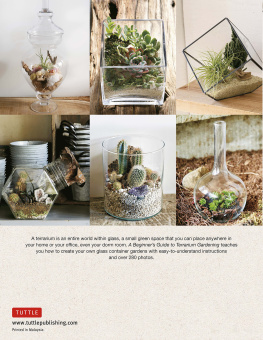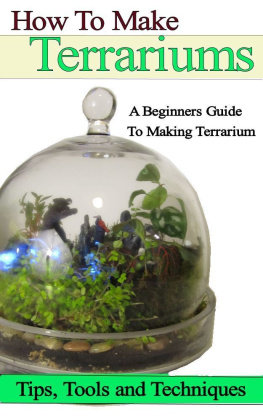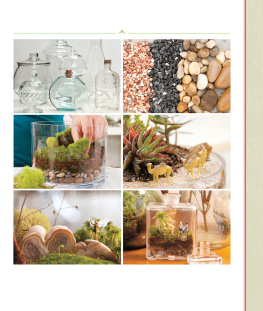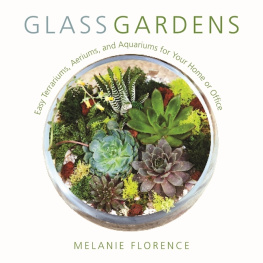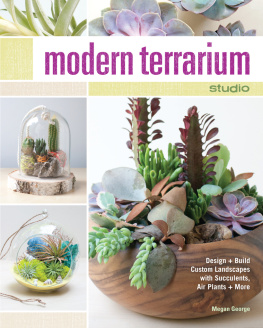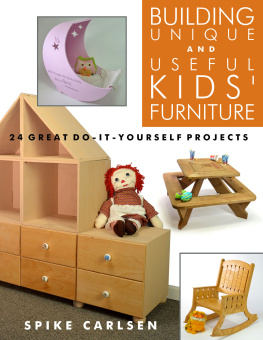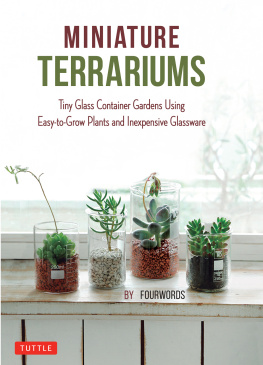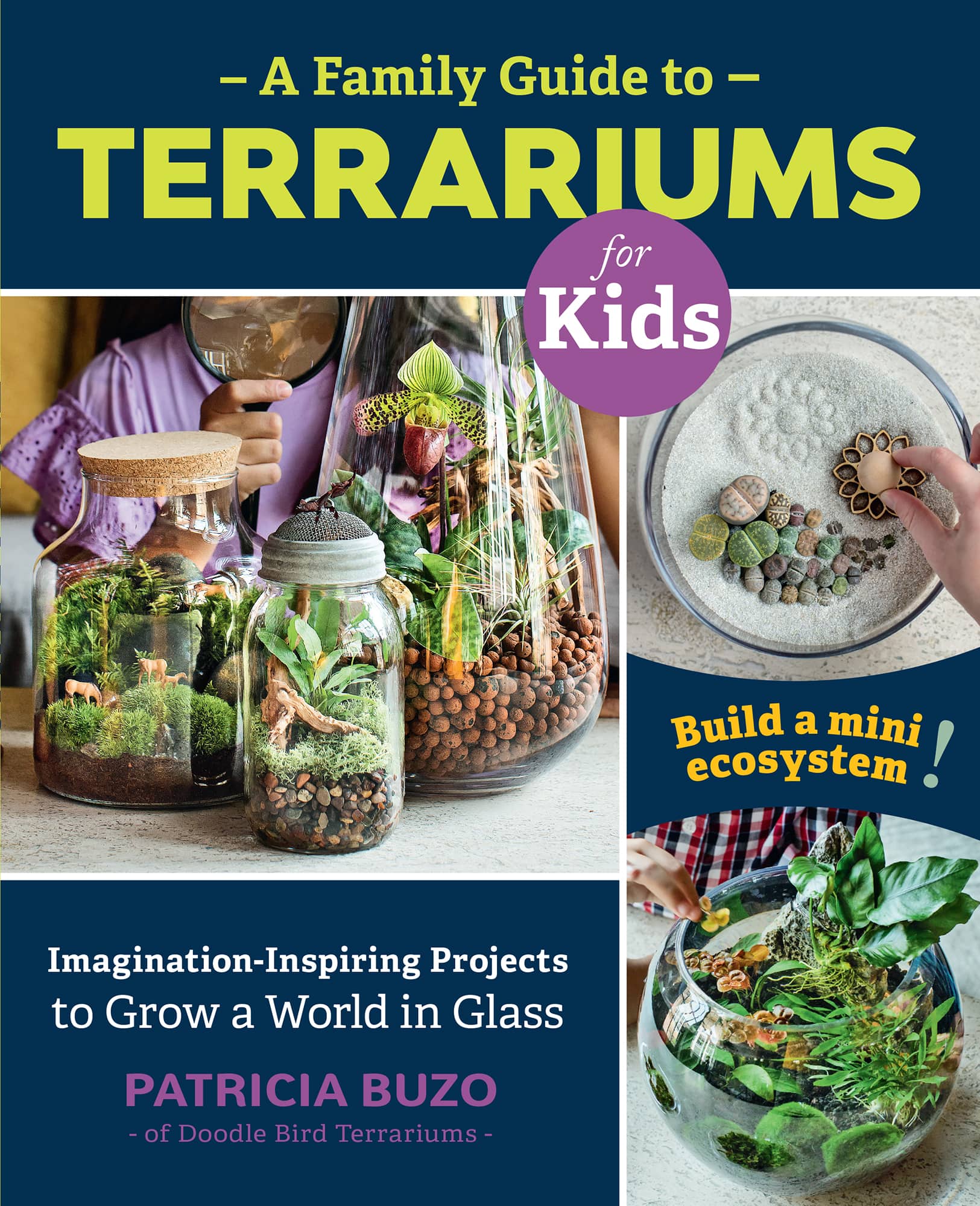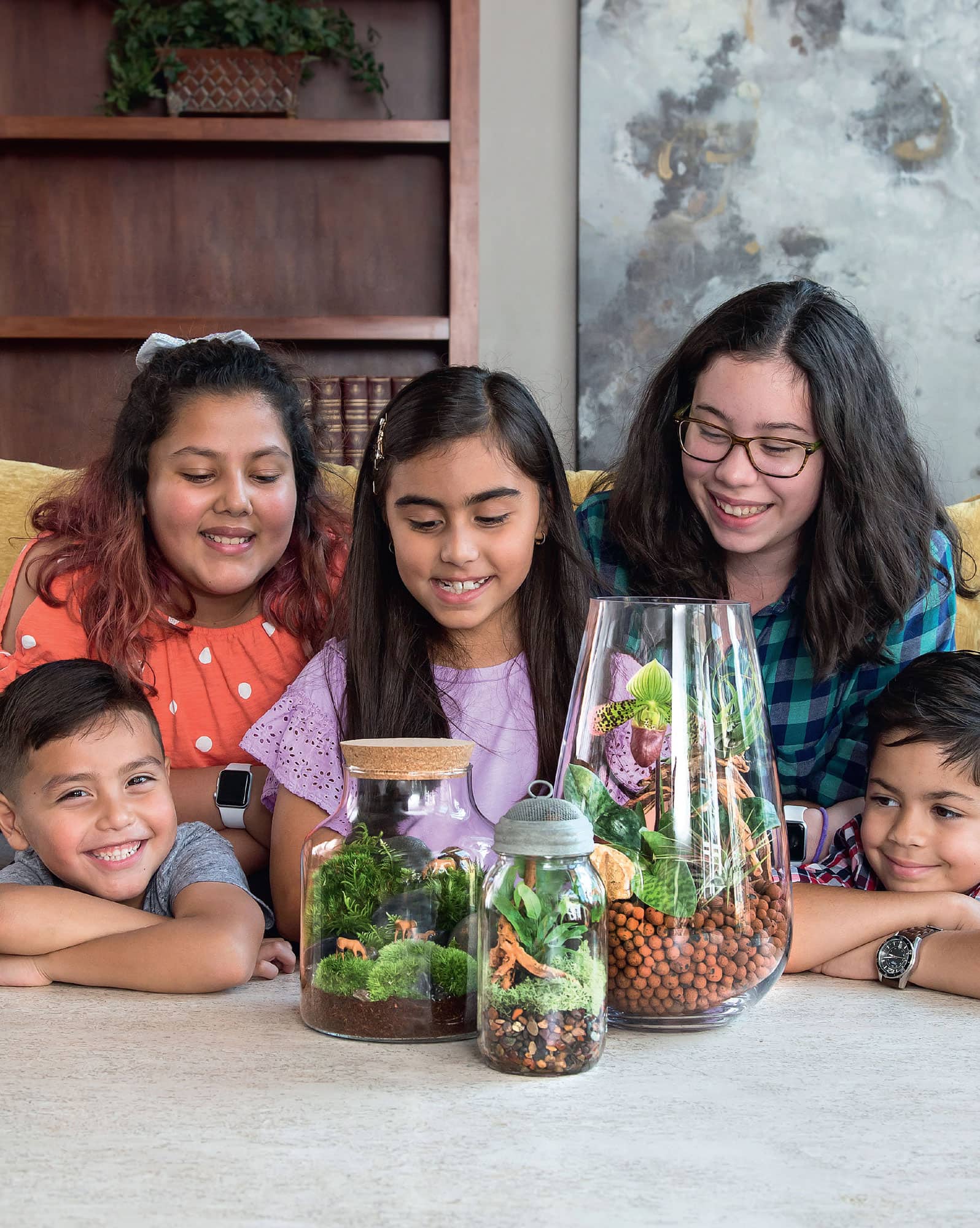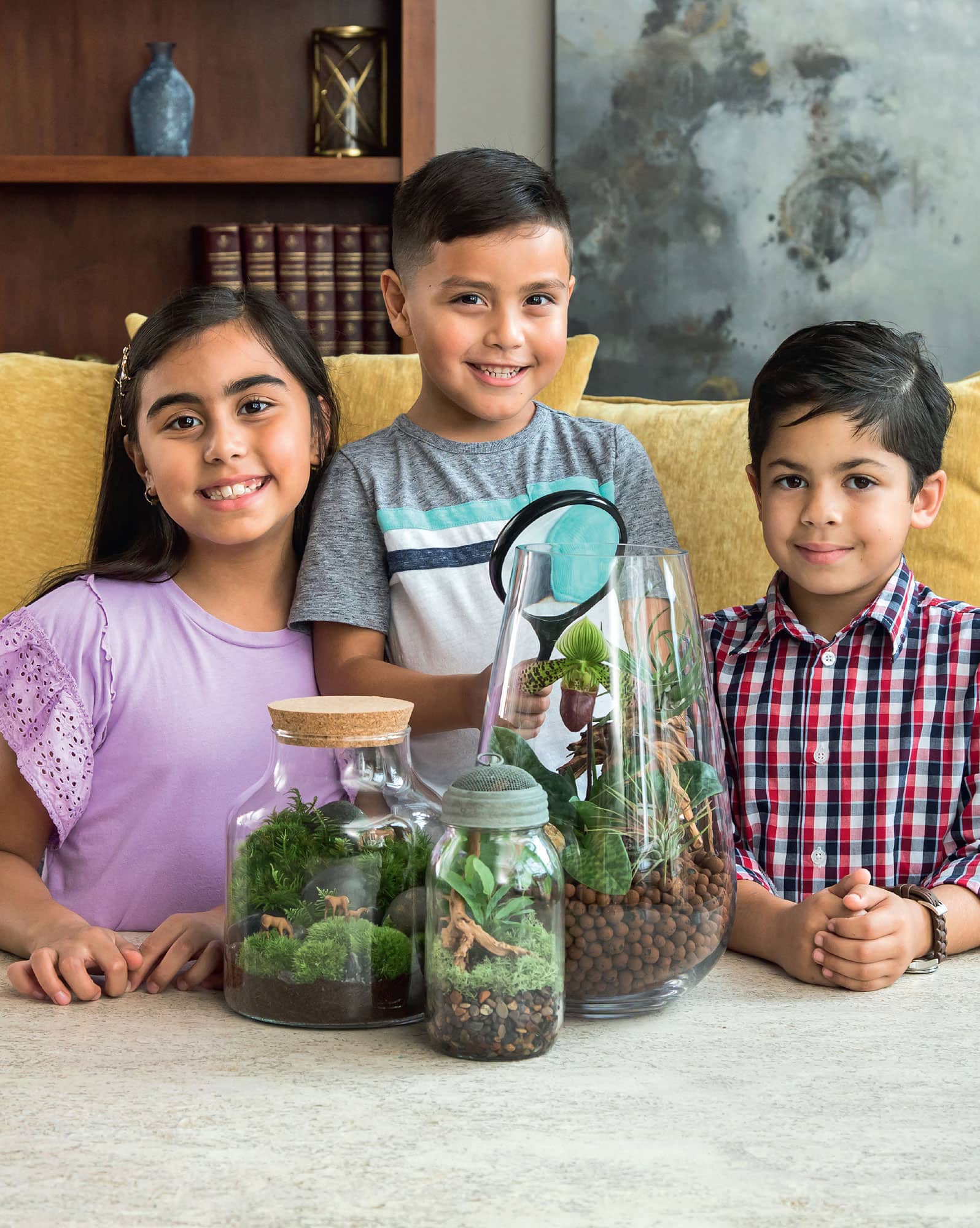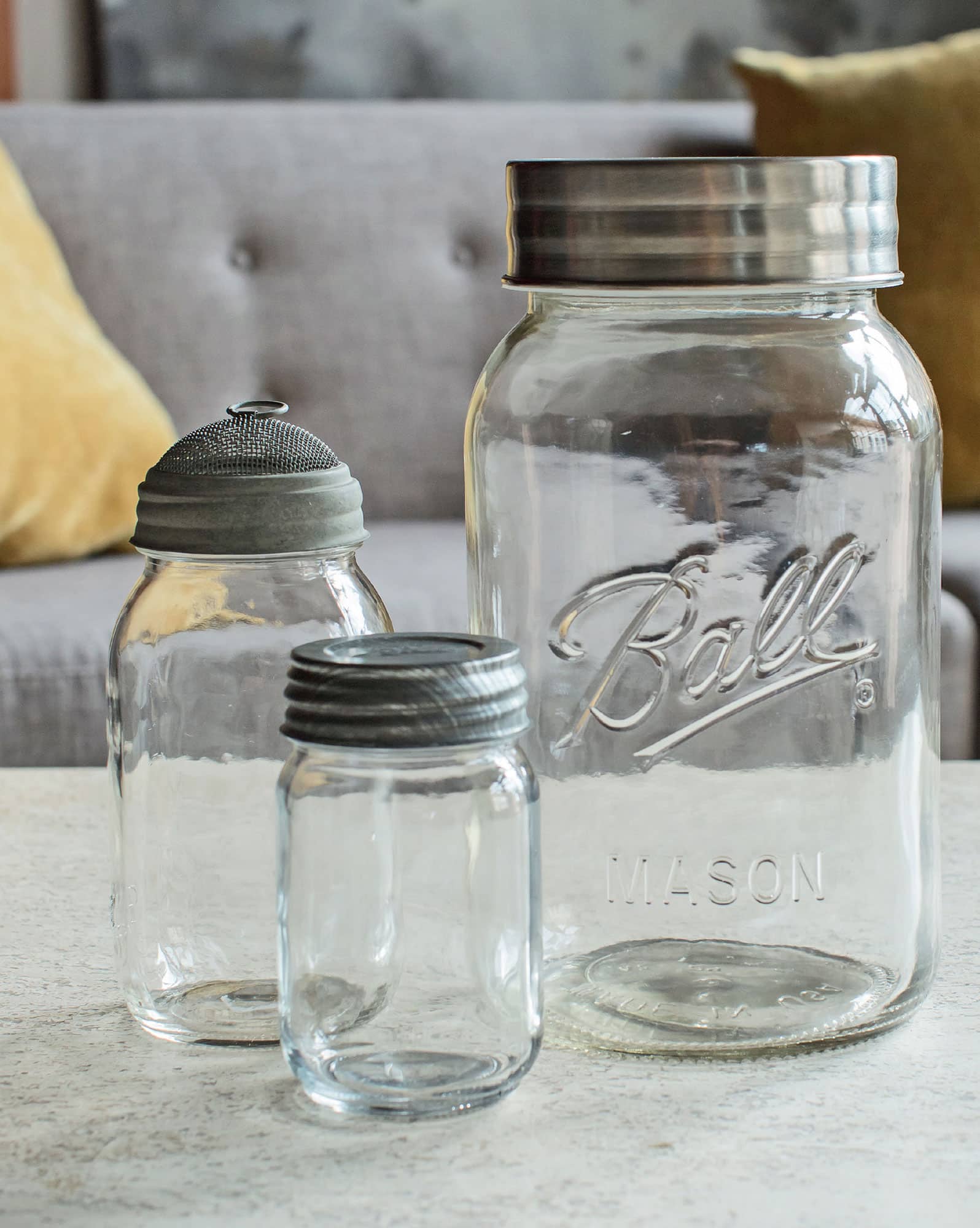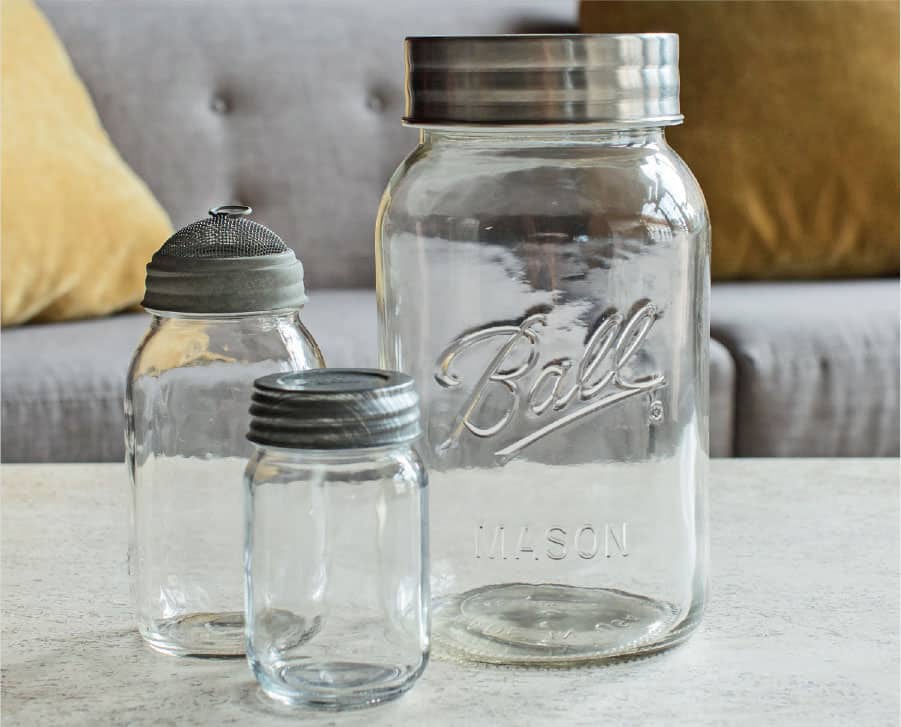Contents
Guide
A FAMILY GUIDE TO
TERRARIUMS
for Kids
Imagination-inspiring Projects to Grow a World in Glass
PATRICIA BUZO

INTRODUCTION
As a child, I loved to help work in my moms garden, that is until a found a slimy grub worm while digging in the soil! Eeek! That turned me off playing in the dirt for a while. Thankfully, it wasnt long before my love of gardening and plants returned, and after all these years I still like to get my hands dirty!
A love of caring for plants is, to me, a fundamental part of growing up. Kids who learn to care for nature grow up to be adults who care for nature. This book was written with the intention not only of educating kids about terrariums, but also nurturing a curiosity for all things living, whether they be tiny plants or tiny animals.
We will be discussing each element in making terrariums with a variety of plant types and how to care for them. Which plants belong in an open container and which in a sealed jar? What plants grow well together? How do you maintain a terrarium? What is a bioactive terrarium and why is it important? All these questions and more are covered in this in-depth yet easy-to-understand manual.
Finally, there are 15 fun and exciting step-by-step terrarium projects introducing a variety of plant groups that both kids and adults can enjoy creating. Moss, succulents, cacti, aquatic plants, mini trees, and even living rocks, all are fascinating plants with unique requirements that are featured throughout the book. I encourage making time to work on these projects as a family; it will be time together you can look back on fondly for many years to come. Alternatively, a classroom terrarium project will not only be a quality educational experience but lots of fun too.
Making terrariums begins with learning the basic parts of a terrarium. So lets get started!
CHAPTER
PICKING THE RIGHT CONTAINER
The container you choose for your plants will contribute to the long-term success of your terrarium. There are many styles to choose from: tall or short, round or square, lid or no lid. Before you choose your container consider the types of plants you want to use. The type of container you pick will depend on the plants needs.
PLACES TO FIND TERRARIUM CONTAINERS
Shopping for a container is half the fun of making your new terrarium! You can find them for sale at secondhand stores, craft stores, and big box stores. You can also recycle canning jars, vases, and fishbowls to use as terrarium containers.
Choosing the Right Container for Your Terrarium
Lid or No Lid
If you want to use tropical plants, mosses, or ferns in your terrarium, I recommend choosing a container with a lid. These types of plants love humidity, and a container that can be sealed with a lid is a great way to trap moisture inside. However, if you plan on planting succulents, cacti, or air plants, its best to pick a lidless container with a large opening so that your plants will have lots of airflow. Open containers are also best for plants that like lots of sun because if they were to be planted in a covered container, the Suns intense rays could cook the plants inside and kill them.
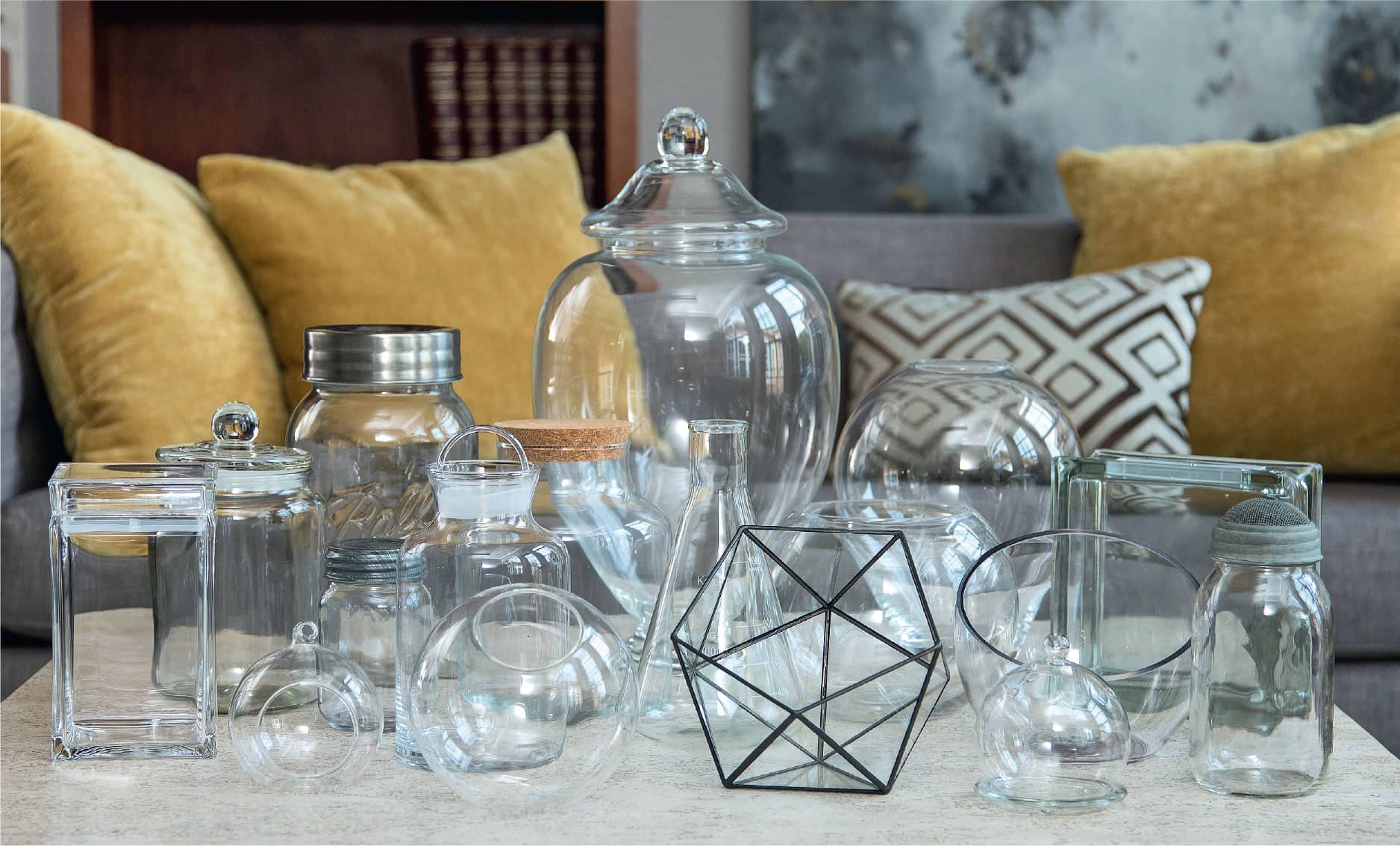
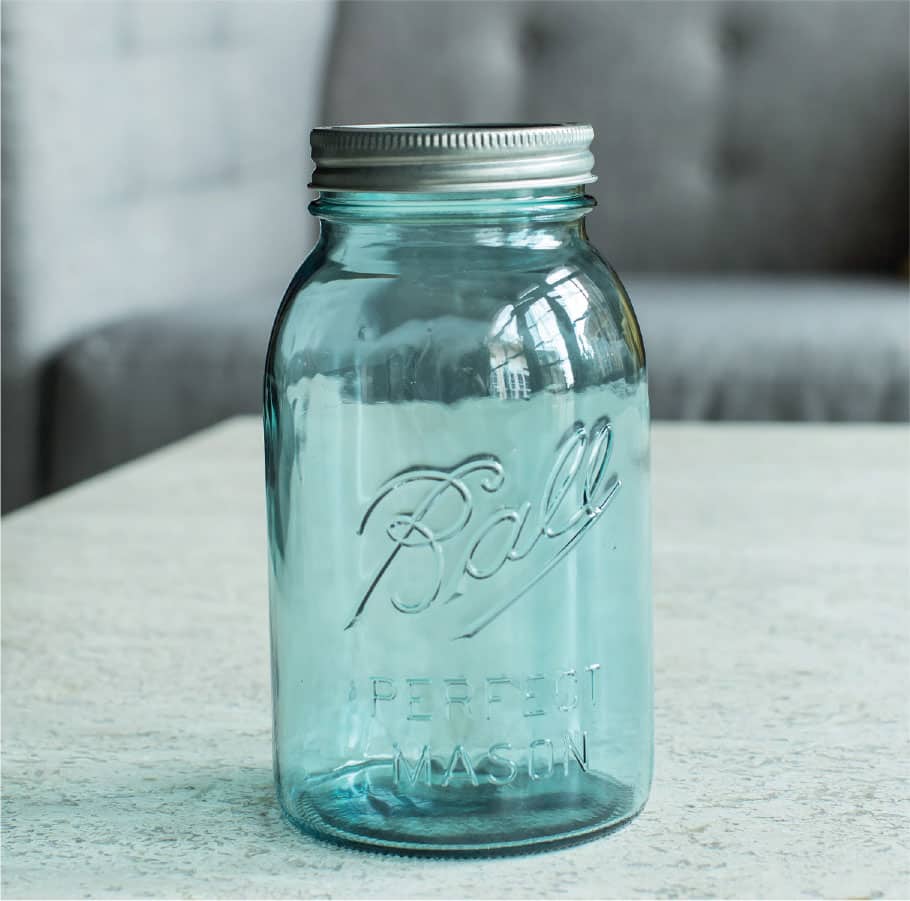
What Kind of Material Should It Be Made Of?
When choosing a container, you will have a few options of what they are made of. Clear glass is the most common and is readily available. You may even find tinted glass containers that are a transparent green or blue color. There is nothing wrong with using lightly tinted glass, but keep in mind that the tint will reduce the amount of light that enters the jar so you will have to choose plants accordingly. Another good option is acrylic (a type of plastic). Acrylic containers are nice because they are less likely to break and have no sharp edges. These containers may be more suitable for younger kids or very accident-prone people (I speak from experience). The downside of acrylic containers is they scratch easily.
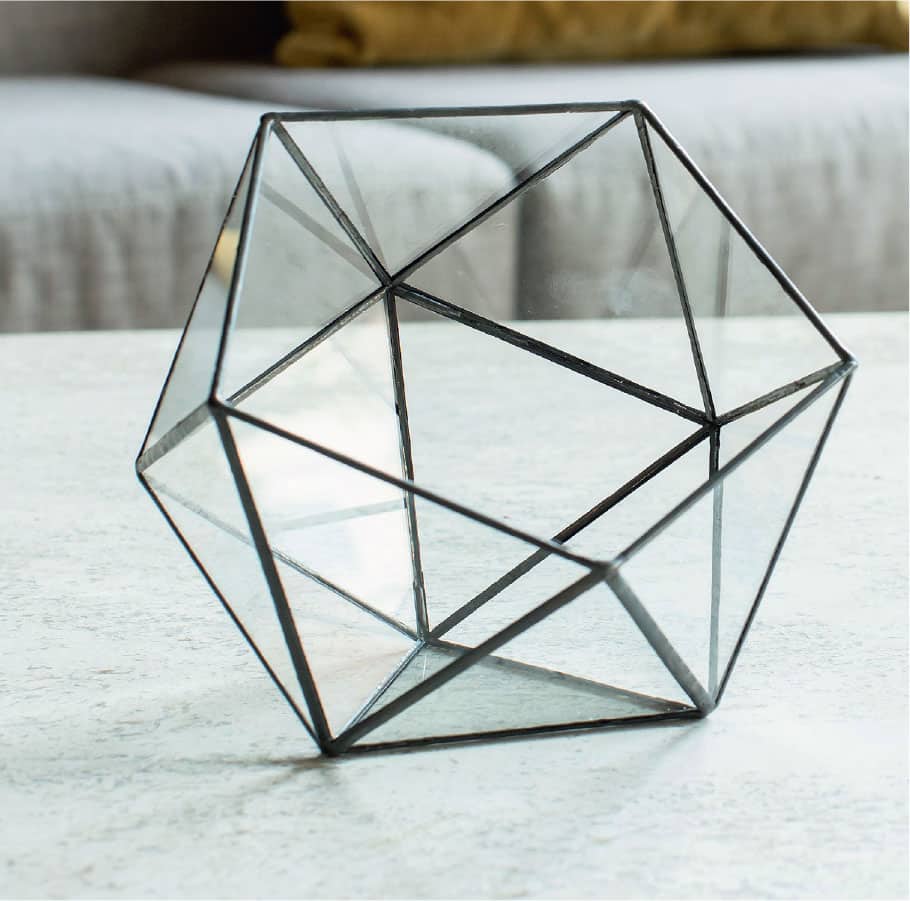
The Shape of the Container
Glass containers come in many shapes so you can pick the look you like. Just remember that if the jar has a very small opening it will be more difficult to get your plants inside. To begin, I recommend starting with a container into which you can fit your hand. Also important is the size. If you have chosen plants that potentially grow very large over time, then perhaps choose a large vase so that the plant has lots of room to grow upwards. A fishbowl is an ideal container for a wide variety of tropical plants as well as being suitable for moss. The globe shape will trap some moisture inside, but a lid should also be used for mosses and other humidity-loving plants. I sometimes use a glass plate as a lid if the bowl didnt come with one. You could also cover it with plastic wrap and cut away the excess around the rim. Plants such as cacti, air plants, and succulents do best when they are planted in glass half-bowls (these have a shape more like a cereal bowl than a fishbowl) or hanging globes with a large opening for airflow.
Types of Containers
Canning Jars: a canning jar is a great home for moss because it is small in size and also has a lid to keep moisture locked inside.
Vases: tall, open-top vases work very well for plants that grow to be very tall or trail, such as vining plants. Tall jars and vases are also very well suited for Lady Slipper Orchids.
Fishbowls and Half-bowls: with or without a lid, fishbowls make wonderful homes for a wide variety of plants. Some suggestions are moss, Peperomias, and small ferns. The bigger the bowl, the more plants you can fit. Half-bowls are the only type of containers I recommend for planting cacti and succulents. They are shaped to allow a lot of airflow and can be placed in direct sunlight without harming the plant.


